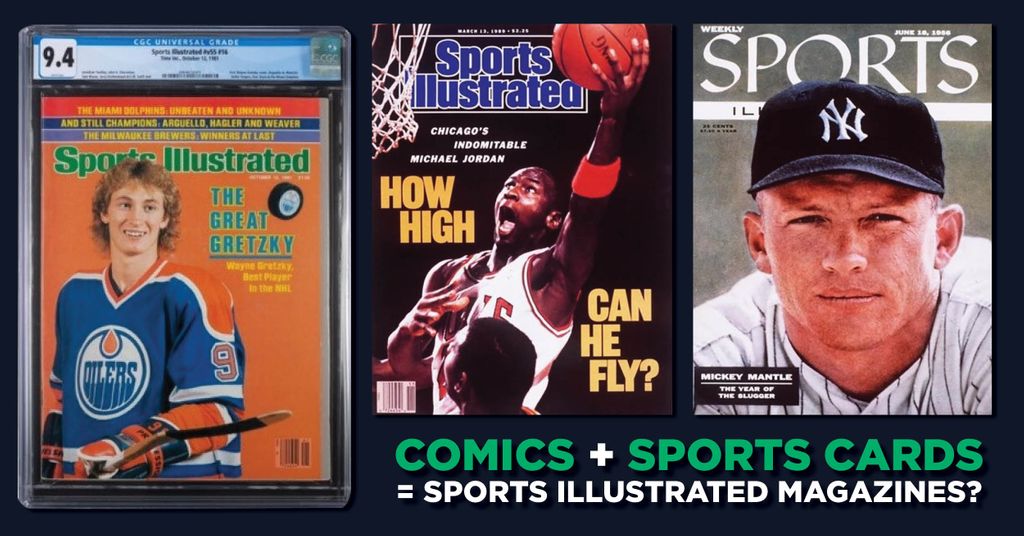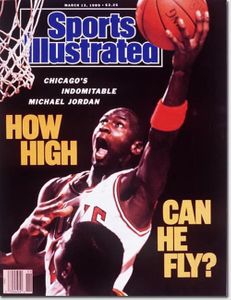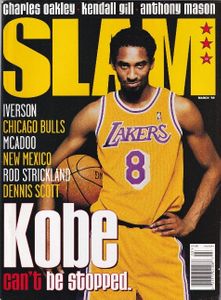
If you’ve been paying attention to the landscape of collectibles in 2022, you’ve likely noticed a somewhat new hobby beginning to carve its own niche—sports magazines. What on the surface may appear to be nothing but another flavor of the week without long-term merit, a quick review of recent sales is enough to draw a double take from most collectors. $18,000 for a Roberto Clemente Sports Illustrated cover. $27,000 for Mickey Mantle. Wayne Gretzky - $30,000.
Everyone and their mother had a subscription to Sports Illustrated back in the day, so why in the world would anyone pay such exorbitant sums for these magazines?
A closer look reveals that this trend is actually the perfect combination of two of the most popular hobbies in the market – comics and sports cards. Rarity, display, nostalgia, and all-time favorite athletes/characters…these desirable traits within comic and sports card collecting all apply directly to the graded sports magazines. Let’s discuss.
This copy of Wayne Gretzky’s first Sports Illustrated cover, graded at a CGC 9.4, sold in February 2022 for $30,000 on Heritage Auctions.
Rarity
Once again, in what world could a Sports Illustrated magazine be considered rare? After all, the publication at one time had over 3 million subscribers receiving copies each week. Here is possibly the most important thing for a new collector to understand—newsstand vs. subscription.
Sure, millions of people were receiving Sports Illustrated each week, but those were subscription copies with their names and addresses printed right there on the cover. On the other hand, it’s estimated that only 2-3% of SI’s weekly print run were newsstand copies. That is, they were purchased directly from a newsstand rack and, you guessed it, never had a mailing label on the cover. The difference aesthetically between a cover with someone’s name/address printed on the front versus one without is pretty obvious. But the disparity in numbers printed is where the greatest source of value lies.
Continuing with the numbers already mentioned, let’s just estimate that a certain issue had 3 million copies printed. If 3% of those were newsstand, that equals 90,000 copies. Now, of those roughly 90,000 newsstand copies, how many are still surviving today? Magazines are considered disposable. Much like comics, many of these issues were purchased, read, and trashed. And of the ones that were salvaged, most were pored through many times over by their reader or stored poorly, thus leaving them in low-grade condition.
It’s also worth noting that 3 million subscribers is where Sports Illustrated lived at its peak.
What about some of the early issues from the 1950s and 1960s? Before SI had really built up its customer base, let’s estimate that its subscriber count sat closer to 1 million. Now, all of a sudden, that number of printed newsstand issues drops to 30,000. And how many of those copies, now 60-70 years old, still exist today? It’s once one starts to dig into these numbers and understand the concept of newsstand vs. subscription that the rarity of these items begins to become clear.
For example, consider the 1956 Mickey Mantle Sports Illustrated cover, possibly the most collectible issue in the history of the publication. As of the writing of this article, only a total of 37 newsstand copies have been graded by CGC. And CGC has been grading magazines for over a decade. How’s that for rarity?
Mickey Mantle’s first Sports Illustrated cover from June 18, 1956. Only 37 newsstand copies have been graded by CGC.
Parallels to Comics
The largest comparison between sports magazines to comics obviously stems from their physical nature. Though most comics are slightly smaller than the standard magazine, the composition is essentially the same, as was the purpose of the item—to be read. But beyond the readability of the inner content, there has always been something special about the cover.
The cover of a magazine or comic denotes significance. It implies star power. It is designed to be attention-grabbing and appealing. A beautiful comic cover photo featuring our favorite superhero evokes nostalgia and enjoyment. The same applies to Sports Illustrated covers showcasing key athletes. And where the concept of a “first cover appearance” elicits extra collectibility for comics, the exact same applies to first cover appearances for athletes on a Sports Illustrated magazine. Whether it be Batman or Michael Jordan, a cover featuring our go-to hero evokes the same reaction -- “this is awesome”. And the size of these items makes them absolutely perfect to put on display.
A Michael Jordan Sports Illustrated cover from 1989 – one of 50 times that he has been featured on the cover.
Parallels to Sports Cards
The likeness from sports magazines to sports cards is primarily that you can collect items featuring your favorite athlete. And just as with sports cards where there are multiple brands (Topps, Panini, Fleer, Bowman, etc.), with sports magazines there are also numerous opportunities for collecting through other publications. I’ve already mentioned Sports Illustrated multiple times and that is because it’s the gold standard of sports magazines. In terms of sports cards, think of it this way: Sports Illustrated = Topps. But there are plenty of other magazines that have shown potential for collectibility – SLAM, Time, Beckett, and Sport, just to name a few.
I also briefly mentioned “first covers” and how this concept is similar to comics. This notion also applies to sports cards, where a Topps rookie card would essentially be the equivalent of a Sports Illustrated first cover. Rookie cards and first covers both typically demand the highest premiums for value and are the most desired items for collectors.
A Kobe Bryant SLAM magazine cover from 1998.
The Uniqueness of Sports Magazines
Beyond the similarities with comics and sports cards, magazine collecting has its own set of unique features as well. Perhaps most notably, the magazines (Sports Illustrated especially) capture an exact moment in history. Whereas comics are fictional and sports cards are randomly manufactured through setlists, a Sports Illustrated contains an exact date and tells a story about what was happening in the sports world at that time. Some of the most iconic moments in sports history are captured perfectly on a Sports Illustrated cover – Hank Aaron’s 715th home run, the 1980 USA “miracle” hockey team, Brandi Chastain’s dramatic 1999 women’s World Cup celebration, and much more.
When all is taken into account with this growing hobby – the rarity, the nostalgia factor, and the fact that it shares so many similarities with comics and sports cards – will sports magazines have staying power or end as a fad? Time will tell, but my advice is this…don’t write off the potential of sports magazines in the space of collectibles.
Want more magazine coverage?
-
SPORTS ILLUSTRATED: COLLECTIBLE BASKETBALL FIRST COVERS
-
COLLECTING SPORTS ILLUSTRATED: INTRO TO THE GENRE
-
SPORTS ILLUSTRATED: THE MOST VALUABLE COVERS








